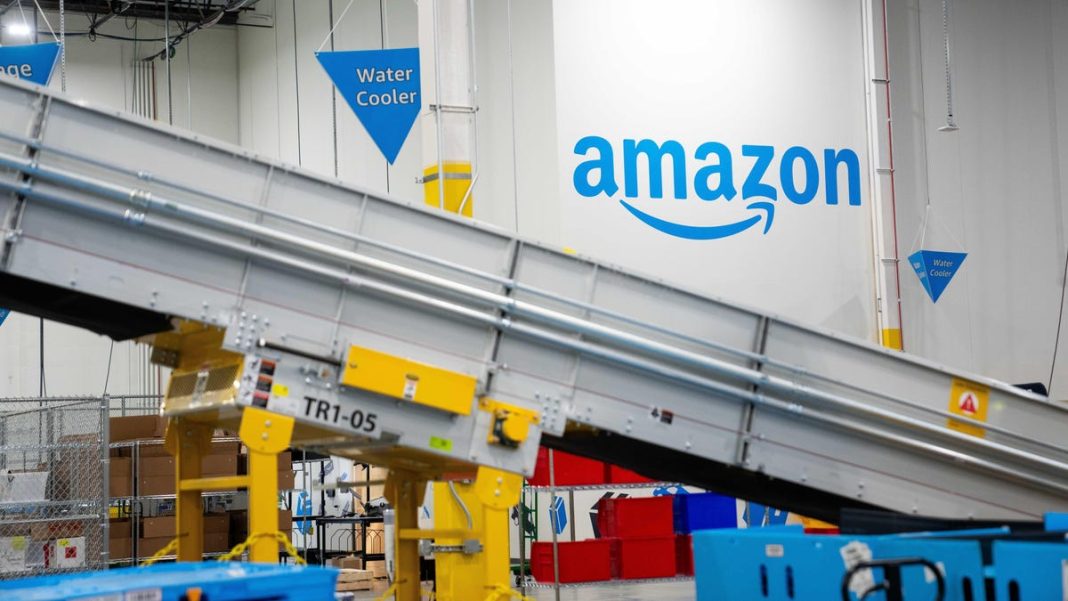Celebrating 20 Years of Amazon Prime: Record-Breaking Deliveries and Savings in the US
When Amazon launched its Prime membership in 2005, it aimed to provide free shipping on millions of items within a two-day timeframe, with no minimum purchase requirement.
Initially, Amazon primarily offered books, DVDs, and CDs.
Next week, Amazon will mark the 20th anniversary of its Prime membership. Today, Prime boasts 300 million products across 35 categories, with tens of millions eligible for same or next-day delivery. In 2024 alone, Amazon successfully delivered over 9 billion packages, according to the Seattle-based company.
Worldwide, Prime members saved nearly $95 billion on free shipping, and in the U.S., the average Prime customer saved around $500 this year on shipping fees, as shared by Jamil Ghani, Vice President of Amazon Prime, in an exclusive interview with YSL News.
What is Amazon Prime?
In the U.S., customers can join Prime for $14.99 per month or $139 annually. This membership includes free shipping on eligible items, along with enhanced member benefits that Ghani noted.
Noteworthy perks include exclusive access to shopping events like Prime Day, a 10-cent discount on a gallon of gas at select Amoco, AM/PM, and BP stations, and free delivery on select Grubhub+ orders. Members also enjoy access to Prime Video, Amazon Music, Amazon Photos, and discounts both online and in-store at Whole Foods and Amazon Fresh, along with savings on prescriptions through Amazon Pharmacy.
Although Amazon does not reveal the specific number of U.S. Prime members, Ghani mentioned that there are over 200 million Prime subscribers globally across 24 countries and every continent except Antarctica.
Remarkably, the average U.S. Prime member placed almost 100 orders last year, averaging nearly two orders each week.
How has Amazon Prime evolved over 20 years?
Since its inception in 2005, the availability of items for delivery has expanded by twenty times, and items are delivered twice as quickly, according to Ghani.
“We find that Prime increasingly captures the attention and shopping preferences of busy households,” Ghani explained, referring to a marketing concept about brand loyalty. “Today, Prime provides a vast array of additional services compared to what it offered back in 2005, which was transformative then, and we strive to continually elevate the experience,” he added.
Through significant investment in its logistics and regional distribution, Amazon has been able to enhance its delivery capabilities. Ghani emphasized that there is a strong focus on ensuring quick accessibility to “everyday essentials,” such as diapers, with over 2 billion such items delivered last year, predominantly within the same or the next day.
This represented a 50% increase from the prior year, with that category growing 90% faster than other sections of Amazon Prime offerings, he noted.
Additionally, Amazon’s same-day delivery services have expanded to cover more than 140 metropolitan areas in the U.S., a rise of over 60% in 2024.
Over the past two decades, Amazon has transformed Prime from a delivery service into a comprehensive membership program offering numerous benefits, stated Neil Saunders, a retail analyst at GlobalData.
“While delivery remains a key aspect of the service, contributing to members recouping their annual fee through shipping savings, many also enjoy the entertainment features such as movies and TV,” Saunders told YSL News. “Amazon has established the most appealing membership in retail, leading to a vast subscriber base and high rates of customer loyalty. Despite the proliferation of imitators, none can rival the advantages of Amazon Prime, ensuring its ongoing relevance,” he added.
What are the perks of having Amazon Prime?
The enticing free shipping prompt initially draws consumers to Amazon Prime, with the entertainment options helping to keep them engaged, explained Douglas Bowman, a marketing professor at Emory University’s Goizueta Business School, who specializes in consumer behavior and brand management.
Many Prime members may not fully recognize the complete range of benefits enclosed in their membership, Bowman shared with YSL News.
“Often, consumers believe they’re gaining enough value from shipping benefits alone and may overlook other perks or not frequently check for new additions,” he noted. “Amazon doesn’t always highlight many benefits that could be highly valued by certain members.”
For consumers, Amazon Prime merges shopping, entertainment, and everyday needs into a cohesive experience, Bowman stated.
“It becomes addictive and integral to a consumer’s daily routine,” he commented.
However, excessive reliance on Prime might lead consumers to overlook offerings from other retailers, potentially resulting in missed opportunities for better prices or products that better suit their needs. Bowman expressed concerns that reduced competition in e-commerce could lead to inflated prices and a decline in product variety in the long run.
Prime could also encourage customers to spend more, he warned.
“The allure of fast, free shipping can trigger impulse buys, with algorithms promoting additional purchases that may lead to unnecessary expenses,” he said. Additionally, with any subscription service, there’s a risk that consumers may not utilize the service enough to justify the cost, only to forget to cancel it, Bowman cautioned.
Betty Lin-Fisher is a consumer reporter. Follow her on X, Facebook or Instagram @blinfisher.

